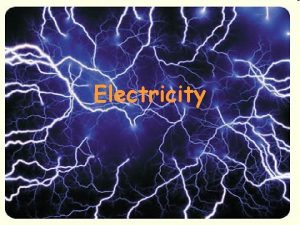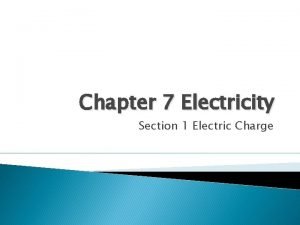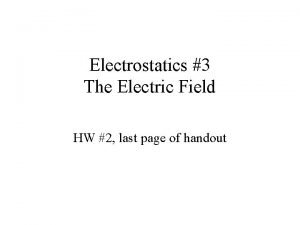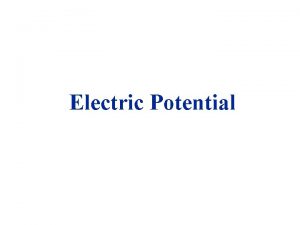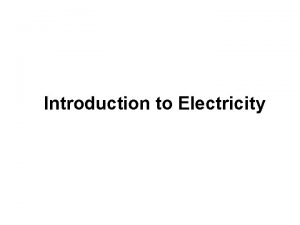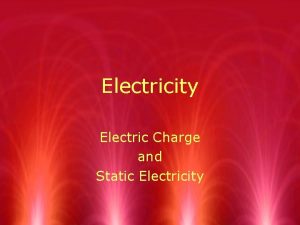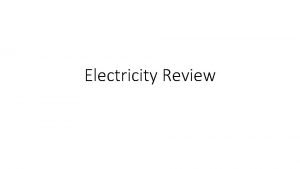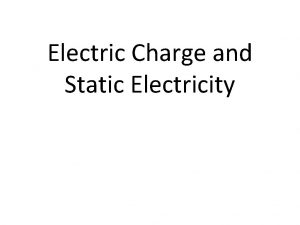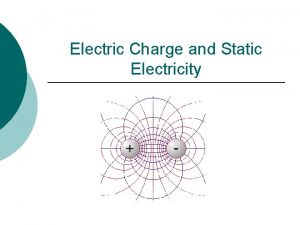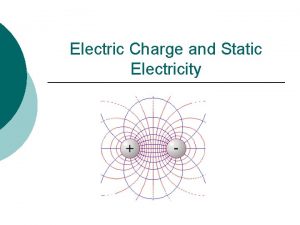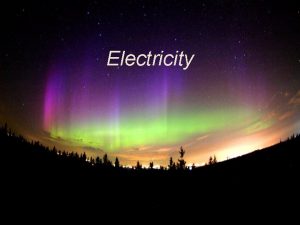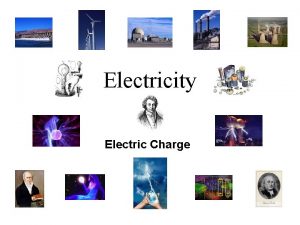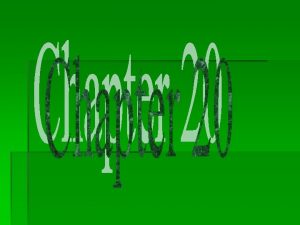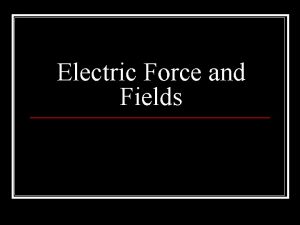Principles of Electricity Electric Charge and Force Electric















- Slides: 15

Principles of Electricity: Electric Charge and Force

Electric Charge • Protons- (+) positive electric charge • Electrons (-) negative electric charge Just as in magnetism, in electricity: • Charges that are the same repel each other • Charges that are opposite attract

Magnetism vs. Electricity Magnetism • Interaction between magnetic poles • A single magnetic pole CANNOT exist alone Electricity: • Interaction between electric charges • Electric charges CAN exist alone

Electric Force • the attraction or repulsion between electric charges

Features of a circuit • Have devices that run by electrical energy • Source of electrical energy • Connected by conducting wires

Open/Closed Circuits • Open = Incomplete circuit 1. No energy can run • Closed = Complete circuit 1. Energy can follow a path

Types of Circuits • Series circuit only one path for electricity to follow • Parallel circuit more than one path for electricity to follow

The symbols for the various components are as follows: • Light bulbs • Switch R 1 • Wires • Voltage Source V V + -

Put it all together • Now that you know what the parts are, let’s draw a series circuit and a parallel circuit.

What is current? • Continuous flow of electric charges through a material (wire) • Two factors that affect current: conductors and insulators

Ohm’s Law • Ohm’s Law states that there is a relationship between current, voltage, and resistance • V = IR • Voltage = Current x Resistance

Conductors • Materials that transfer electric charge well • What kinds of materials do you think would make good conductors?

Conductors • Metals

Insulators • Materials that transfer electric charges poorly • What kinds of materials do you think would make good insulators?

Insulators • Nonmetals
 Chapter 6 electricity section 1 electric charge answers
Chapter 6 electricity section 1 electric charge answers Electricity section 1 electric charge
Electricity section 1 electric charge Electricity section 1 electric charge
Electricity section 1 electric charge Difference between charge and electric charge
Difference between charge and electric charge Difference between charge and electric charge
Difference between charge and electric charge Chapter 21 electric charge and electric field
Chapter 21 electric charge and electric field Chapter 21 electric charge and electric field
Chapter 21 electric charge and electric field Units for coulombs
Units for coulombs Units of a charge
Units of a charge Chapter 17 section 1 electric charge and force answer key
Chapter 17 section 1 electric charge and force answer key Static electricity and current electricity
Static electricity and current electricity Current electricity
Current electricity Electricity and magnetism vocabulary
Electricity and magnetism vocabulary Force on charge in electric field
Force on charge in electric field Why electric field is conservative
Why electric field is conservative Inductor water analogy
Inductor water analogy

